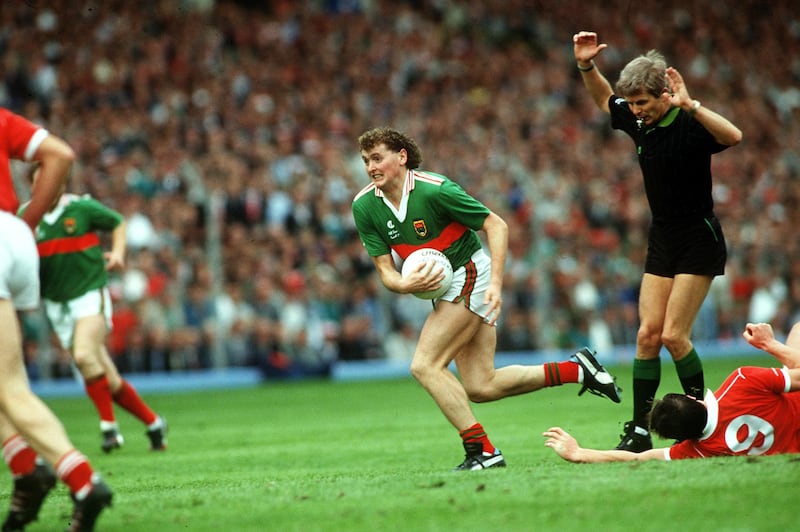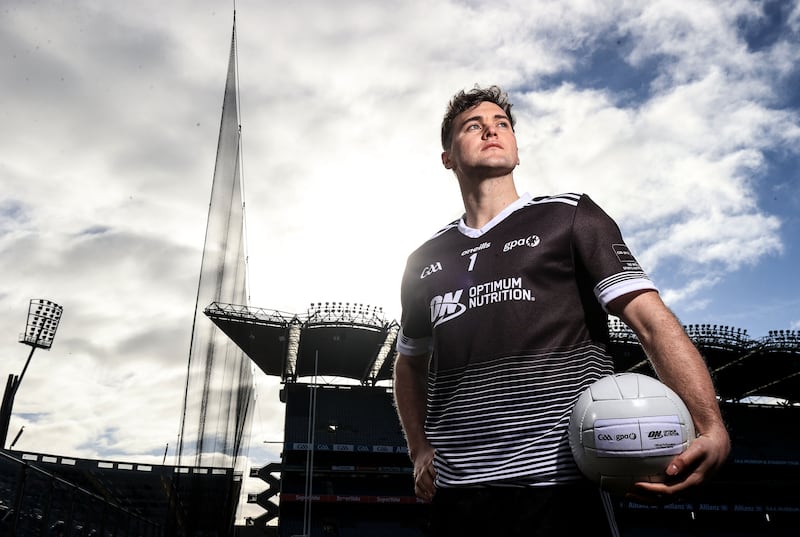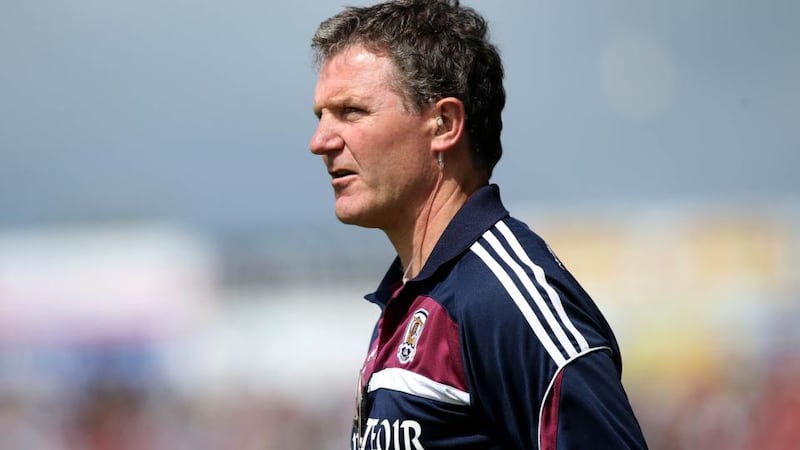A high-tension few weeks for Connacht football begins this weekend with the league finals. The focus is sharply on the Division One final between Mayo and Galway but a week later, Roscommon, third in the division behind their neighbours, head to Castlebar as the first shots in the provincial championship are fired. The winners will take on Galway a fortnight later.
Throw in Sligo’s table-topping performance in Division Four and the current league has been the most successful campaign for the west since 2001, when all four semi-finalists came from the province.
That year Galway and Mayo also met in the Division One final and by the end of the year Connacht was home to the All-Ireland club title (Crossmolina), the league (Mayo), the Connacht championship (Roscommon) and Sam Maguire (Galway).
Comparisons between Salthill and wartime Istanbul aren’t immediately obvious but on occasions like this, the seaside suburb is also a lively spot with partisans from both sides mingling freely amid the intrigue of conflict.
Inside Gaelic Games: The weekly GAA newsletter from The Irish Times
Cork have big defensive decisions to make before facing prolific Dublin
Old foes reunited: Kilkenny’s Huw Lawlor aiming to take giant leap towards Liam in clash of titans
Seán Moran: 25 years since tyranny of sudden death ended in championship football
Connections are plentiful. Galway footballer Robert Finnerty featured in a remote press call on Thursday and expressed surprise to his father that so many of the questions had been about Mayo.
Yet that was inevitable. Anthony Finnerty played in All-Irelands for Mayo and dutifully brought his son to most of them including the previous league decider between the counties 22 years ago.

“He wouldn’t remember that,” says his father. “He was only about three. Of course it was easier to get a green-and-red jersey on him back then.”
Anthony settled in the city, having spent his student days in UCG.
“Like a lot of Mayo people I had a fondness for Galway and was lucky enough to meet a woman from Salthill, who kept me here. The town itself made an impression on me. We always say Mayo people built Galway and half the people here are from Mayo.
“The Finnertys originated in Galway and out of all the generations I was the one who brought [the] name back!”
The Mayo connections don’t end there. Maurice Sheridan, another All-Ireland veteran is also settled in the area and a former manager of the Salthill-Knocknacarra club, which has become a bulk supplier to Pádraic Joyce’s county team.
“Mayo people are football people. We’re always slagging that we keep the club going. You could have a year when there’s a Mayo fella involved in nearly all of the teams. In fact our club delegate who’s vice-chair of the county football board is Brendan McBrien from our club, who’s the uncle of David McBrien who plays for Mayo.
“There are all these connections, not just the Finnertys. There’s Maurice Sheridan and Cathal McSweeney’s grandfather is John Morley, the great Mayo footballer who was shot back in 1980 [in the course of his duty as a member of the Garda] – one of my favourite players growing up.”
That association was deepened last year when John O’Mahony, the Mayoman and doyen of Connacht football, took over the management of Salthill-Knocknacarra and led them to county final where they lost narrowly.
[ Rob Finnerty and Galway primed for a big few weeksOpens in new window ]
He says he had a specific task when taking over the team, as there was a changing of the guard with the retirement of established players like Seán Armstrong and Finian Hanley, both of whom O’Mahony recruited as selectors.
“There had been a lot of work done at under-age level and needed help to oversee the transition to senior. I was asked to help and agreed on the proviso that all my backroom team would be from within the club.
“Norman Costello had trained a lot of those teams as had Des Sheeran, who had worked with the Galway minors. Seán Armstrong and Finian knew the team very well.
“They do all of the training, which is a departure from the management model I would have previously used but the intention is that a new management structure is grown within the club for the future.”
He too is aware of the two identities in the area, being familiar with the county from his time as an All-Ireland winning manager.
“There’s a strong Mayo association in Galway city even though it’s only down the road.”

The rivalry is elevated by the emergence of two highly rated teams. Mayo have surprised people with how revitalised they have looked under the new management of Kevin McStay, as they topped the division a round early.
New players have staked claim to places and the more experienced assigned new roles, most notably Aidan O’Shea’s transformation into the full-forward line.
Hope springs eternal, as the county tries to break the Sisyphean routine of losing their last 11 All-Ireland finals since the most recent success, 72 years ago.
As well as hope comes apprehension, conditioned by Galway’s two All-Ireland titles in 1999 and 2001, which came after the first three of Mayo’s final defeats in the 1980s and 1990s.
Last July Galway were back in the final and pushed Kerry all the way, reviving the fear across the border that after years of futile effort, they would have to endure the Sam Maguire crossing the Shannon and bedecked with maroon and white.
“That fear is very real,” Finnerty says. “I’d imagine it’s still there for Mayo people after all the blood, sweat and tears that Galway could come along and pinch an All-Ireland.”
[ There will be no phoney war when Mayo meet Galway, says Cillian O’ConnorOpens in new window ]
[ Comer feared the worst after suffering knee injuryOpens in new window ]
Alan Mulholland won a minor All-Ireland with Galway in 1986 and repeated the feat as manager in 2007, adding an under-21 title four years later before taking charge of the seniors until 2014. He played on the first Salthill team to reach an All-Ireland club final and has chaired the club.
He says the development of the club’s catchment, which has accommodated so many Mayo people attracted to what is the region’s centre of population, has been dramatic.
“Salthill developed in the 1950s and ‘60s and then through ‘70s, ‘80s and ‘90s you had Knocknacarra expanding. Since the inception of the club in 1966 it’s been a constant expansion and Knocknacarra [which was subsequently incorporated into the club name] has added about 10,000. It’s like another town being tacked on to the club.”
The environment for Gaelic games benefits from the improved fortunes of the county footballers. Sunday’s league final is a bit like an outsize hors d’oeuvre: sufficiently appetising to attract interest but also big enough to create concern about capacity to tackle the main course.
Galway and Mayo is one of those rivalries in which one side is rarely so far ahead of the other that a win for the favourites is out of the question. Galway got there in last year’s championship despite Mayo closing on them as the minutes ran out.
The first league fixture for both ended honours even after a decent match in Castlebar.
Mulholland says the rising stock in the counties has sharpened interest.
“Rivalry is peaking in that both counties have teams in the top four in the betting for the All-Ireland and both have realistic chances. This is a novelty after a decade of Mayo having the upper hand. We have a team that’s matching them and both of us are matching the Dubs, Kerry’s and Tyrone’s. It’s a healthy, good-natured rivalry.
“We have been lucky enough to nip and win a couple of All-Irelands but otherwise have spent long periods in hibernation. Realistically over the last 10, 20 years they have been the most consistent county in the country. If you really want to annoy a Mayo man, you show sympathy for their losing All-Irelands!”

Is the rising tide lifting all boats in Connacht? There will be three counties from the province in next year’s Division One, level with Ulster as the best representation. Sligo will be campaigning for a place in Division Two and Andy Moran’s Leitrim hoping to go the extra distance and get promoted.
It doesn’t surprise Mulholland when asked if football in the province is genuinely on the march.
“The league suggests we are. My youngest is 16 and involved in the Galway academy and for me the Connacht Centre of Excellence is nothing short of a credit to the people who built it. Galway have been holding trials there in Bekan.
“I wasn’t a huge fan of the Connacht centre being built up in Ballyhaunis and sceptical that all of the counties would use it but they are because it’s actually the right place for it.
“I was involved with the minors in 2006-07. These guys have 200 turning up for under-16 trials whereas I would have had 50 or 60. John Prenty and his team up there with the Centre of Excellence and the Dome have raised the profile of the GAA in Connacht and contributed to what I’m seeing on the ground – that it’s brought us up on a par with rugby and soccer.
“I think that’s feeding through into the desire of kids to play intercounty football, which is higher than at any time in the past decade. It’s not the only reason but it’s helped a lot.”
A renewed western state of mind.













